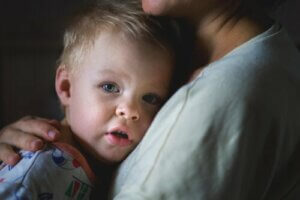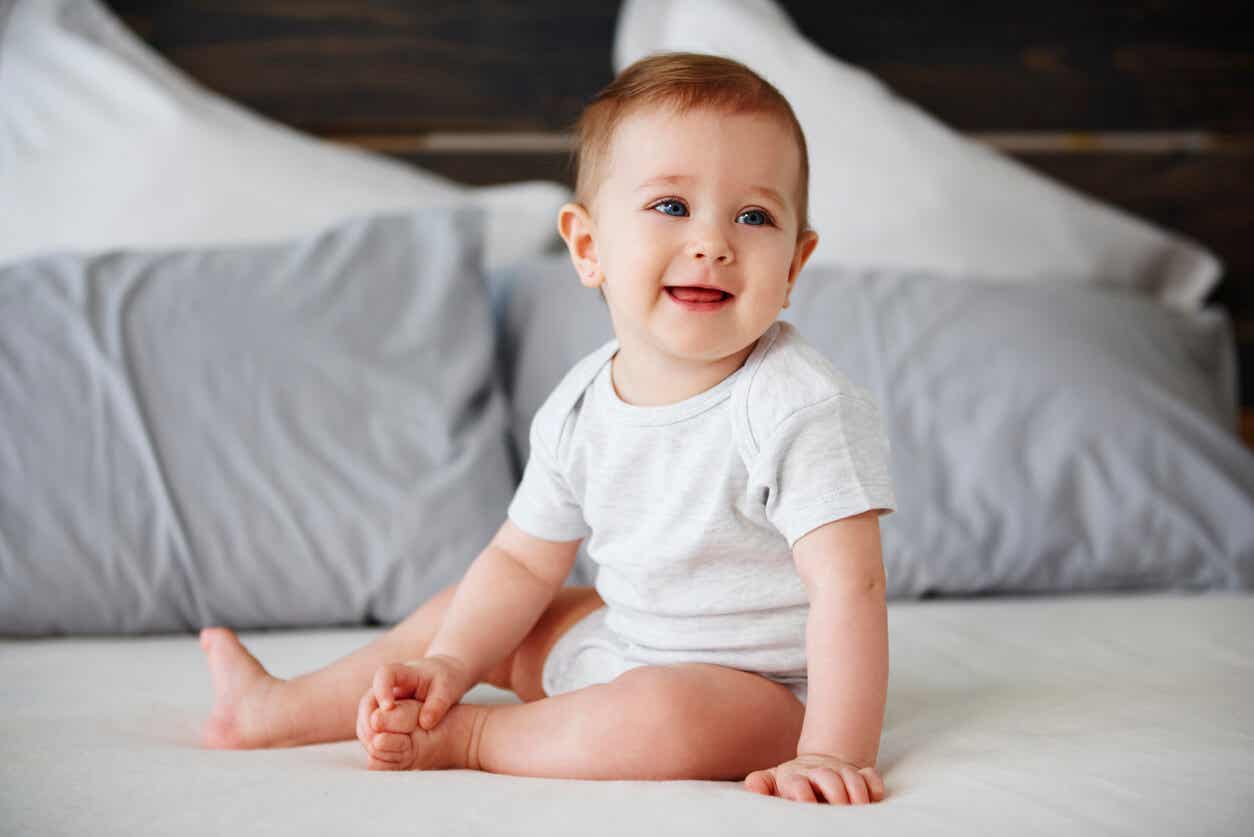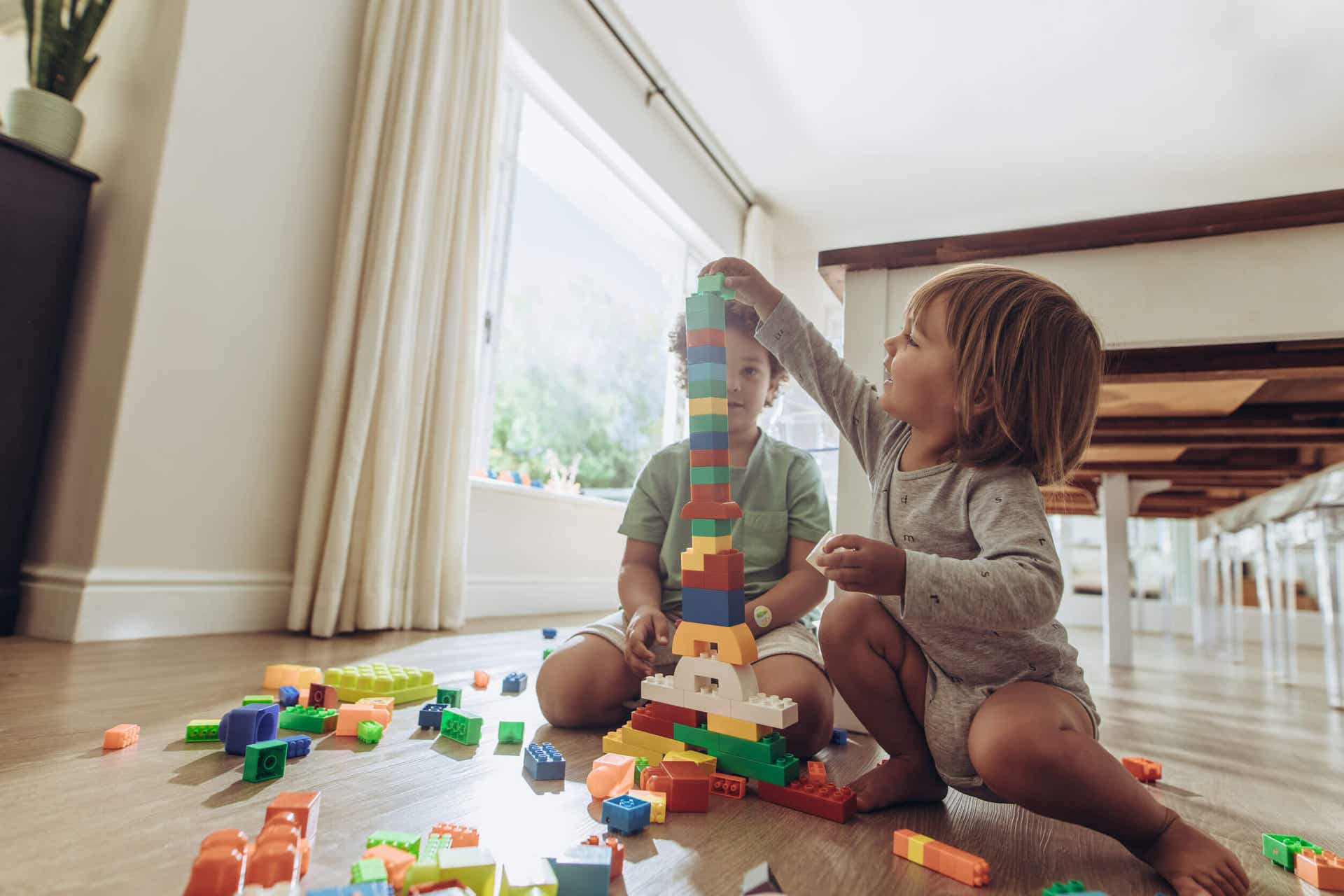Goodness of Fit: How to Adapt to Your Child's Temperament


Written and verified by the psychologist Elena Sanz Martín
From the day babies are born, they show their own temperament, which is their personal style to interpret and react to the world that surrounds them. Even though their temperament has a hereditary component, it changes according to their first experiences. Therefore, if parents understand and adapt to their baby’s temperament, they may obtain quite positive results. This is also known as goodness of fit.
Sometimes, babies have the same temperament their parents have and, sometimes, they don’t. However, this isn’t about parents changing their personalities. Rather, it’s about adapting their upbringing rules to their child’s temperament and needs.
Identify your baby’s temperament in order to foster a goodness of fit
Thomas and Chess’s goodness of fit model states that children vary on 9 main dimensions of temperament. And parents should consider these dimensions when raising their kids.

Activity level
Active and restless children love to crawl, climb, and move their bodies. However, they need adults to calm them down and to help them identify when they’re tired and need a pause.
On the other hand, less active children prefer quieter activities, like cuddling and reading a story. Notwithstanding, they’ll need an adult to offer them different physical activities or games to get involved in.
Distractibility level
Some children become easily distracted by the stimulus of their environment. This’s why they find it quite useful to perform simple activities that include only one task at a time. However, they can also get distracted by feeling uncomfortable with their own body. Therefore, you should make sure they’re always clean, well rested, and fed.
On the other hand, babies who aren’t easily distracted can spend a lot of time performing only one activity. In this case, you should offer them alternatives or warn them about possible changes. For example: “in a few minutes, we’ll stop playing and we’ll have lunch”.
Intensity, one of the dimensions of goodness of fit
Children who are able to feel and express their emotions in an intense way need their parents to calm them down, without losing their temper. Just the same, parents should teach these children to relax on their own. On the other hand, less intense babies may feel overwhelmed by their parents’ tone or emotional reactions. This is why you should try to be more gentle with them.
Regularity
Regular children follow quite predictable eating, sleeping, and omission habits. Therefore, they love routines and they prefer to follow them, even when they’re on vacation.
On the contrary, irregular children need their parents to be open to improvisation and changes of plans. However, trying to create a routine can be quite beneficial for them.
Sensory threshold
More sensitive children need quiet places with low light, soft textures, and a calm voice. Less sensitive children enjoy shiny colors and stimulating music. At the same time, they love to try new flavors and different textures.
Approach/withdrawal
Some children love to explore the unknown. They enjoy visiting new places and relating to new people. On the other hand, some children feel uncomfortable when experiencing new things and prefer to stay in their parents’ arms. This is because they need more time to adapt to the situations.
Adaptability
Adaptable children are able to perform different activities and have no problem with change. Others need to perform gradually and to make clear transitions. For example, saying: “goodbye toys”, before leaving their toys to take a shower.

Persistence, another goodness of fit dimension
Some children persevere in their attempts to accomplish new things. They don’t become frustrated and they continue trying until they make it. However, other children become frustrated easily. In this case, you should ask them to perform simple tasks and guide them in the process. In addition, you should praise their effort more than their results.
Mood
Positive babies express their joy easily, smile, and have fun when they play. However, it’s also important for them to get to know other negative emotions and accept them. On the other hand, when babies are more serious, their parents need to understand that it doesn’t mean they’re angry. Besides, they need to identify the subtle signs of happiness their children may express and focus on them.
Goodness of fit prevents future problems
Different kinds of temperaments relate to emotional or behavioral problems in children. As a result, certain personalities may lead to poor academic performance, social problems, or even anxiety and depression. Therefore, if parents adapt their respectful upbringing to their children’s specific needs, they may prevent these difficulties.
From the day babies are born, they show their own temperament, which is their personal style to interpret and react to the world that surrounds them. Even though their temperament has a hereditary component, it changes according to their first experiences. Therefore, if parents understand and adapt to their baby’s temperament, they may obtain quite positive results. This is also known as goodness of fit.
Sometimes, babies have the same temperament their parents have and, sometimes, they don’t. However, this isn’t about parents changing their personalities. Rather, it’s about adapting their upbringing rules to their child’s temperament and needs.
Identify your baby’s temperament in order to foster a goodness of fit
Thomas and Chess’s goodness of fit model states that children vary on 9 main dimensions of temperament. And parents should consider these dimensions when raising their kids.

Activity level
Active and restless children love to crawl, climb, and move their bodies. However, they need adults to calm them down and to help them identify when they’re tired and need a pause.
On the other hand, less active children prefer quieter activities, like cuddling and reading a story. Notwithstanding, they’ll need an adult to offer them different physical activities or games to get involved in.
Distractibility level
Some children become easily distracted by the stimulus of their environment. This’s why they find it quite useful to perform simple activities that include only one task at a time. However, they can also get distracted by feeling uncomfortable with their own body. Therefore, you should make sure they’re always clean, well rested, and fed.
On the other hand, babies who aren’t easily distracted can spend a lot of time performing only one activity. In this case, you should offer them alternatives or warn them about possible changes. For example: “in a few minutes, we’ll stop playing and we’ll have lunch”.
Intensity, one of the dimensions of goodness of fit
Children who are able to feel and express their emotions in an intense way need their parents to calm them down, without losing their temper. Just the same, parents should teach these children to relax on their own. On the other hand, less intense babies may feel overwhelmed by their parents’ tone or emotional reactions. This is why you should try to be more gentle with them.
Regularity
Regular children follow quite predictable eating, sleeping, and omission habits. Therefore, they love routines and they prefer to follow them, even when they’re on vacation.
On the contrary, irregular children need their parents to be open to improvisation and changes of plans. However, trying to create a routine can be quite beneficial for them.
Sensory threshold
More sensitive children need quiet places with low light, soft textures, and a calm voice. Less sensitive children enjoy shiny colors and stimulating music. At the same time, they love to try new flavors and different textures.
Approach/withdrawal
Some children love to explore the unknown. They enjoy visiting new places and relating to new people. On the other hand, some children feel uncomfortable when experiencing new things and prefer to stay in their parents’ arms. This is because they need more time to adapt to the situations.
Adaptability
Adaptable children are able to perform different activities and have no problem with change. Others need to perform gradually and to make clear transitions. For example, saying: “goodbye toys”, before leaving their toys to take a shower.

Persistence, another goodness of fit dimension
Some children persevere in their attempts to accomplish new things. They don’t become frustrated and they continue trying until they make it. However, other children become frustrated easily. In this case, you should ask them to perform simple tasks and guide them in the process. In addition, you should praise their effort more than their results.
Mood
Positive babies express their joy easily, smile, and have fun when they play. However, it’s also important for them to get to know other negative emotions and accept them. On the other hand, when babies are more serious, their parents need to understand that it doesn’t mean they’re angry. Besides, they need to identify the subtle signs of happiness their children may express and focus on them.
Goodness of fit prevents future problems
Different kinds of temperaments relate to emotional or behavioral problems in children. As a result, certain personalities may lead to poor academic performance, social problems, or even anxiety and depression. Therefore, if parents adapt their respectful upbringing to their children’s specific needs, they may prevent these difficulties.
All cited sources were thoroughly reviewed by our team to ensure their quality, reliability, currency, and validity. The bibliography of this article was considered reliable and of academic or scientific accuracy.
- Thomas, A., & Chess, S. (1985). Genesis and evolution of behavioral disorders: From infancy to early adult life. Annual Progress in Child Psychiatry & Child Development, 140–158. https://psycnet.apa.org/record/1986-30307-001
- Ocampo, D. B., & Palos, P. A. (2008). La influencia del temperamento en problemas internalizados y externalizados en niños. Revista Intercontinental de Psicología y Educación, 10(1), 29-48. https://www.redalyc.org/pdf/802/80210103.pdf
- Ramos Martín, J. M., Sancho García, M., Cachero Sanz, P., Vara Arias, M., & Iturria Matamala, B. (2009). El Temperamento Infantil en el Ámbito de la Prevención Primaria: Relación con el Cociente de Desarrollo y su Modificabilidad. Clínica y salud, 20(1), 67-78. http://scielo.isciii.es/scielo.php?script=sci_arttext&pid=S1130-52742009000100006#:~:text=De%20acuerdo%20con%20el%20%22Modelo,problemas%20de%20ajuste%2C%20le%20ayudar%C3%ADa
This text is provided for informational purposes only and does not replace consultation with a professional. If in doubt, consult your specialist.








